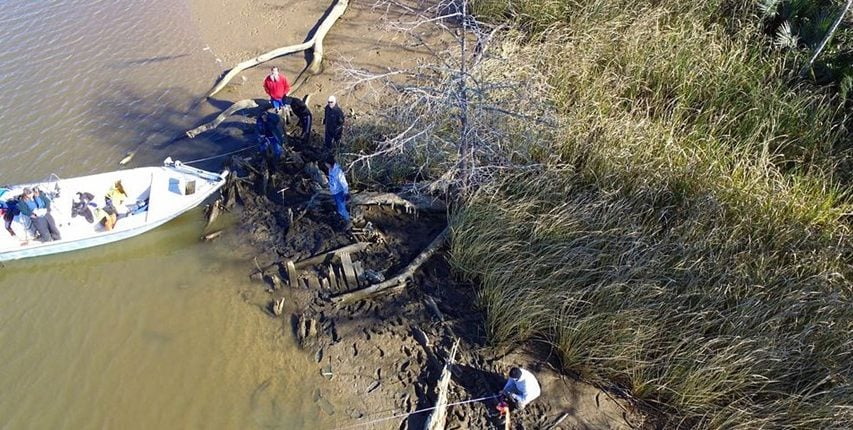Last American slave ship, the Clotilda, may have been found
There's a Zora Neale Hurston connection
The last American ship of human cargo has a Zora Neale Hurston connection

The last slave ship to bring human cargo to America might have been found by Ben Raines of AL.com. He relied on historical records as well as accounts from old timers to find what archeologists believe could indeed be the long-lost wreck of the Clotilda (aka Clotilde).
Ties to Zora Neale Hurston
The Clotilda is the ship that brought Cudjo Lewis to the United States, as told in the upcoming Zora Neale Hurston book Barracoon: The Story of the Last “Black Cargo” which is due to be published for the first time later this year.
Lewis was the last survivor of the slave trade in America and he met with Hurston multiple times over several years. They first met in 1927 and in 1931 she visited him in Plateau, Alabama to interview him over the course of three months for her book. This story was not published at the time, but will finally hit bookstores this May.
Extreme Weather Played a Role
The remains of the Clotilda are partially buried in mud near an island in the lower Mobile-Tensaw Delta, near the city of Mobile, Alabama. The ship’s hull is lying on its port side with the length of the starboard side exposed.
The wreck, usually submerged, was exposed by the extreme weather system that brought the “Bomb Cyclone” to the Eastern Seaboard. The storms left the area approximately two and a half feet below normal low tide levels.
“I’m quaking with excitement. This would be a story of world historical significance, if this is the Clotilda,” said John Sledge, author of The Mobile River and a senior historian with theMobile Historical Commission. “It’s certainly in the right vicinity… We always knew it should be right around there.”
After looking into likely locations for the wreck, reporter Ben Raines used the low tides to search for it. The area in which it was found is only accessible by boat. Raines brought archeologists from the University of West Florida as well as a shipwright expert in the field of wooden vessel construction techniques to the site.
Evidence that it is the Clotilda
Each of the experts agreed that the wreck seemed to date to the mid-1800s, which matches with the Clotilda which was built in 1855. The remains of the ship also showed evidence that it had been burned as it was reported the Clotilda was.
“These ships were the 18-wheelers of their day. They were designed to haul a huge amount of cargo in relatively shallow water,” said Winthrop Turner, a shipwright specializing in wooden ships. “That’s why you see the exceptional number of big iron drifts used to hold the planking together. That’s also why the sides of the ship are so stout. They are almost two feet thick. The construction techniques here, no threaded bolts, iron drifts, butt jointed planking, these all confirm a ship built between 1850 and 1880.”
The archeologists who investigated the wreck, led by Greg Cook and John Bratten, agree that the remains could be that of the Clotilda.
“You can definitely say maybe, and maybe even a little bit stronger, because the location is right, the construction seems to be right, from the proper time period, it appears to be burnt. So I’d say very compelling, for sure,” Cook stated.
“There is nothing here to say this isn’t the Clotilda, and several things that say it might be,” Bratten agreed.
